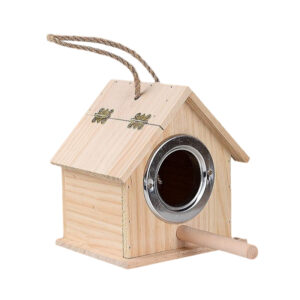In the intricate tapestry of life, breeding houses play a pivotal role in weaving together the threads of genetic diversity and species conservation. These specialized facilities serve as sanctuaries of controlled reproduction, where the delicate dance of life unfolds under the watchful eye of caretakers and scientists alike. Join us as we delve into the fascinating world of breeding houses, exploring their significance, functions, and the impact they have on our world.
The Importance of Breeding Houses:
Breeding houses serve a crucial purpose in various industries and conservation efforts. From agriculture to aquaculture, these facilities enable the selective breeding of animals to improve traits such as productivity, disease resistance, and genetic diversity. In wildlife conservation, breeding houses play a vital role in captive breeding programs aimed at preserving endangered species and reintroducing them into their natural habitats.
Design and Infrastructure:
The design and infrastructure of breeding houses are carefully tailored to the specific needs of the animals being bred. Climate-controlled environments ensure optimal temperature, humidity, and lighting conditions year-round. Ventilation systems maintain air quality, while feeding and watering facilities provide essential nourishment. Biosecurity measures are also implemented to prevent the spread of disease and maintain the health of the breeding population.
Structure and Construction: Birdhouses typically feature a box-like structure, constructed from durable materials such as wood, plastic, or metal. Wood is a common choice due to its natural insulating properties and aesthetic appeal. The birdhouse may consist of walls, a floor, a roof, and an entrance hole, with some designs including additional features like perches, ventilation holes, and removable roofs for easy cleaning.
Size and Dimensions: The size and dimensions of a birdhouse are critical factors in attracting specific bird species. The entrance hole diameter, height of the interior cavity, and overall dimensions should be suitable for the target birds. Smaller entrance holes deter larger predators while allowing smaller birds to enter, ensuring the safety of the nesting occupants.
Breeding Management Techniques:
Breeding houses employ a variety of techniques to manage and optimize reproduction. Controlled mating, artificial insemination, and embryo transfer are common methods used to achieve desired breeding outcomes. Genetic selection based on traits such as growth rate, disease resistance, and temperament helps improve the overall quality of the breeding stock. Pedigree tracking and genetic testing ensure the integrity and genetic diversity of the breeding population.
Conservation and Biodiversity:
In the realm of conservation, breeding houses play a critical role in safeguarding biodiversity and preventing the extinction of endangered species. By maintaining captive populations and implementing carefully managed breeding programs, these facilities help preserve genetic diversity and create genetic reservoirs for future conservation efforts. Breeding houses also facilitate research into reproductive biology, genetics, and animal behavior, providing valuable insights into the intricacies of life and evolution.
Challenges and Ethical Considerations:
While breeding houses offer significant benefits, they also pose challenges and ethical considerations. Maintaining genetic diversity, preventing inbreeding, and ensuring the welfare of the animals are ongoing concerns. Striking a balance between conservation goals and ethical practices requires careful management, transparency, and collaboration between stakeholders.
Location and Placement: Proper placement of the birdhouse is essential for attracting birds and ensuring their safety. Ideally, birdhouses should be mounted on poles, trees, or buildings at a height that varies depending on the species. They should be positioned away from areas with heavy human activity and predators, providing a quiet and secluded nesting environment.
Conclusion:
Breeding houses are more than just facilities; they are beacons of hope for the preservation of life and the conservation of biodiversity. Through careful management, innovative techniques, and a shared commitment to ethical practices, these sanctuaries of controlled reproduction pave the wa

